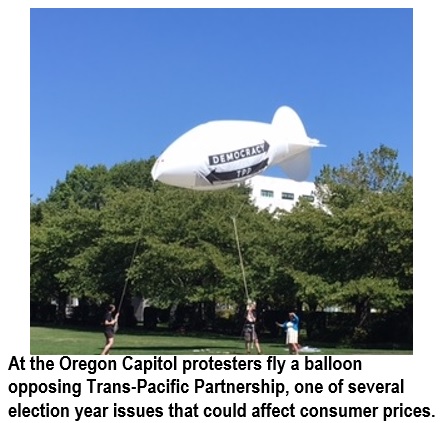Oregon Prosperity Project,
The Washington Post, citing research from the American Enterprise Institute (AEI), recently addressed an important topic that should be part of the discussion when legislators debate several policy issues currently in the news. Luxury goods are falling in price while many necessities become more expensive.
While food and housing have increased in price by 60% over the past 20 years, items such as mobile phone service, televisions, computers and some toys have become less expensive, a chart from AEI shows. Some of the biggest price increases involve expensive purchases that help improve quality – and in some cases – length of life: college education, child care and health care.
There are economic explanations for some of these price differences. Technological advances have driven down the cost of many electronic gadgets and also have helped reduce the cost of producing some non-electronic manufactured goods. In contrast, scientific breakthroughs sometimes increase the cost of health care by making expensive new treatments and drugs available. Also, patients don’t shop for health care the way they shop for TVs or cell phones. Education and child care are among the most labor dependent businesses and their services can’t be outsourced, which reduces cost-cutting options. Meanwhile, the funding system for higher education and the loans many college students obtain also influence prices in myriad ways.
Still, policy positions that candidates and parties are promoting on hot-button issues in this year’s state and national campaigns could send prices of needed items even higher.
Start with the issue of trade. Both presidential candidates oppose the Trans-Pacific Partnership (TPP) and favor tighter trade policies. Such policies would reduce competition, make imports more expensive and increase prices for some of the things (imported electronics, for example) that currently are cheap.
As for child care, higher minimum wages already are putting pressure on providers in some states, including Oregon. Proposed scheduling rules could increase the likelihood, and size, of price increases for child care, as well as other goods and services.
Public universities across the nation are requesting budget increases. In Oregon, the ask is $100 million more than the previous biennium. But even if increases are justified – and in some cases they are – there is no assurance that increased public spending will lead to lower tuition rates, unless Legislatures take steps to require the money go toward tuition reduction.
Candidates pledging to help middle income Americans need to carefully consider how policy proposals will affect prices. If they don’t, we will be discussing the same issues again in four years.
Click here to read the full article from The Washington Post.
Disclaimer: Articles featured on Oregon Report are the creation, responsibility and opinion of the authoring individual or organization which is featured at the top of every article.



